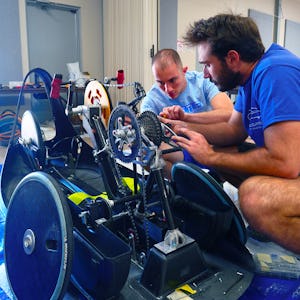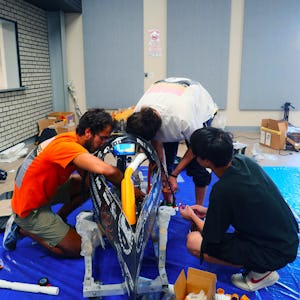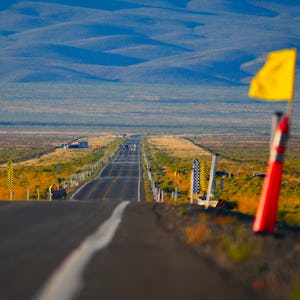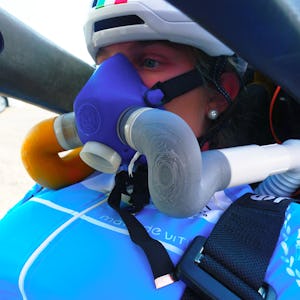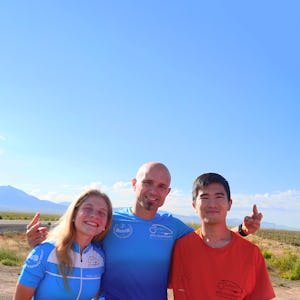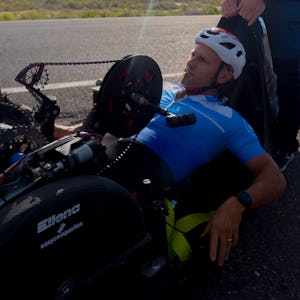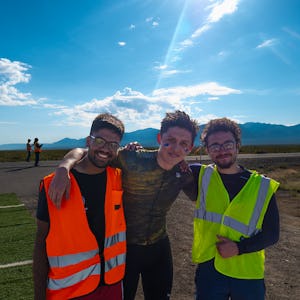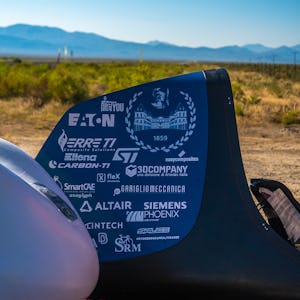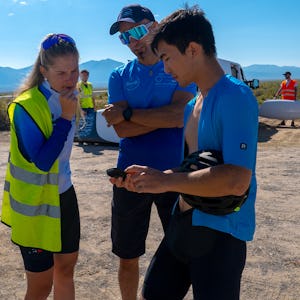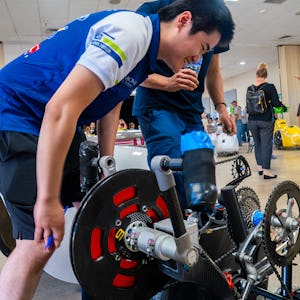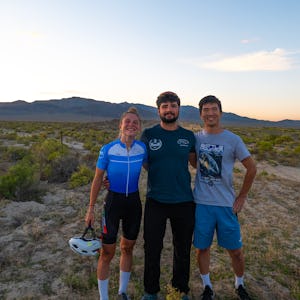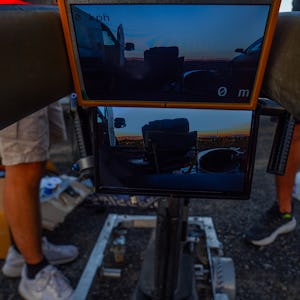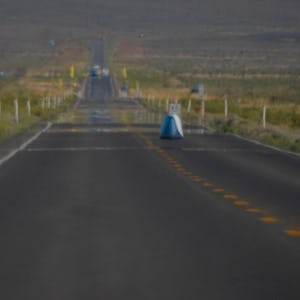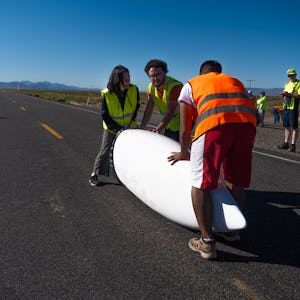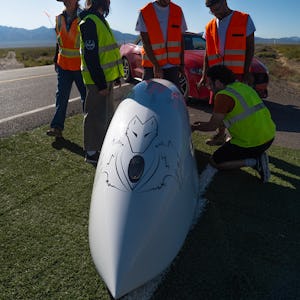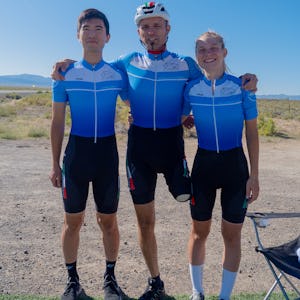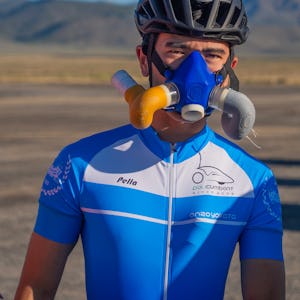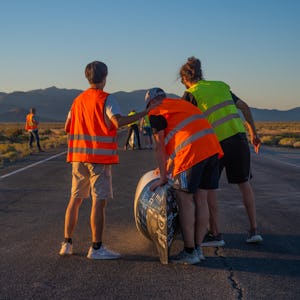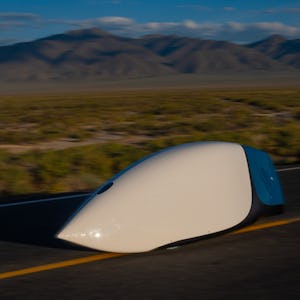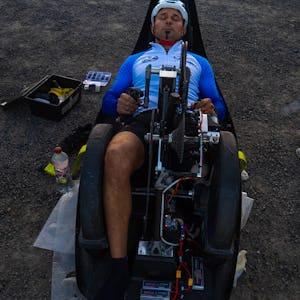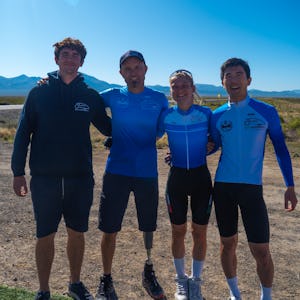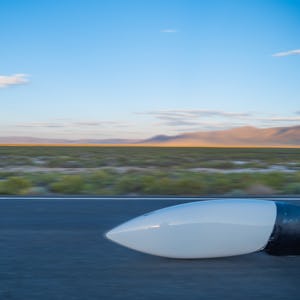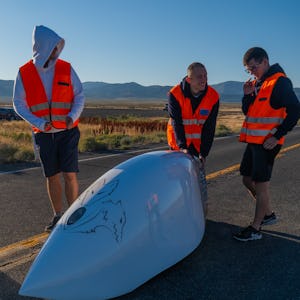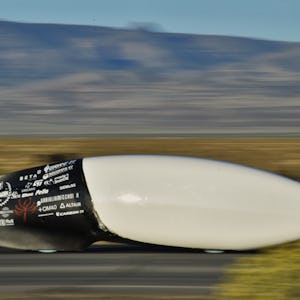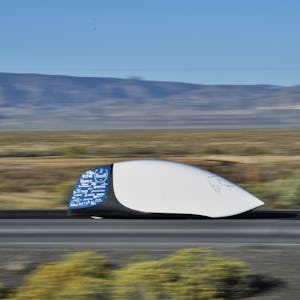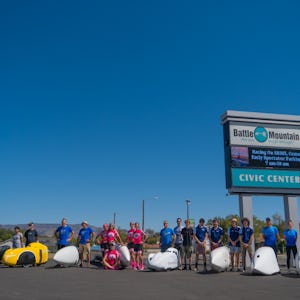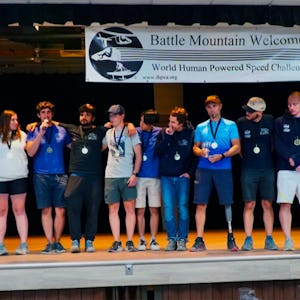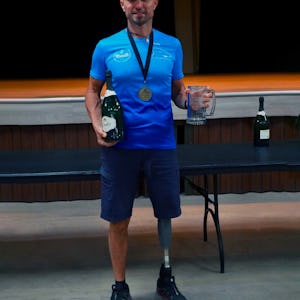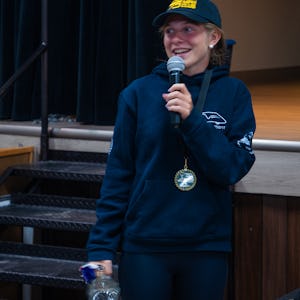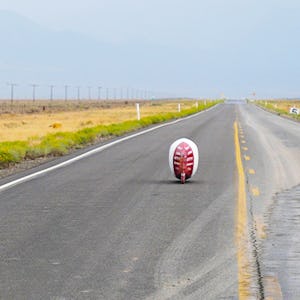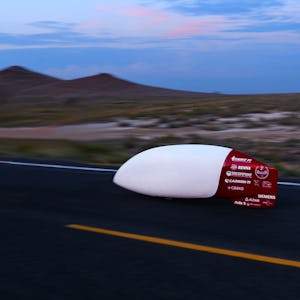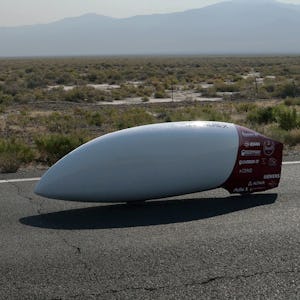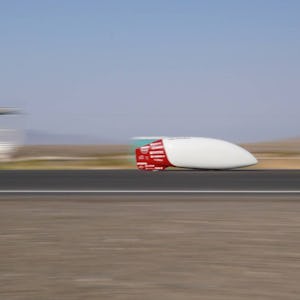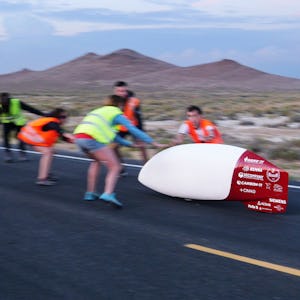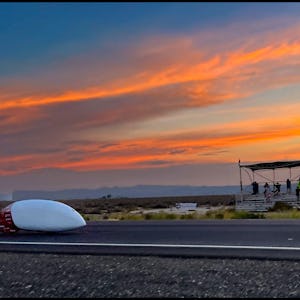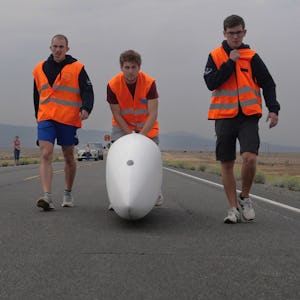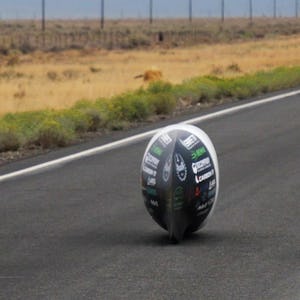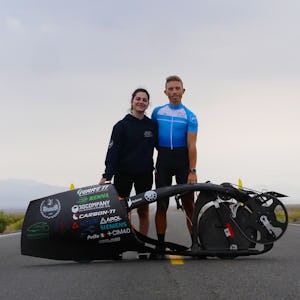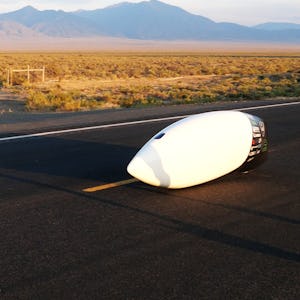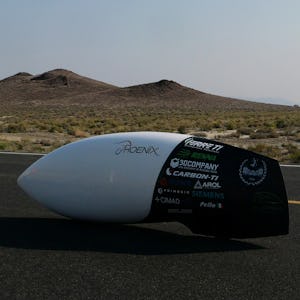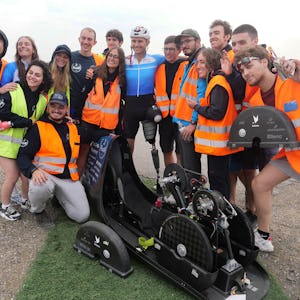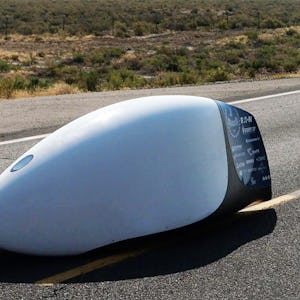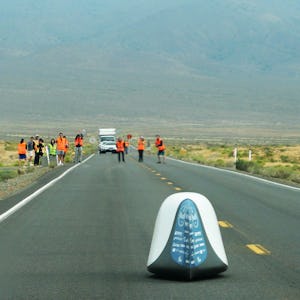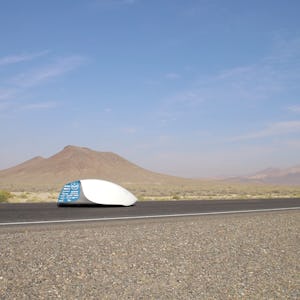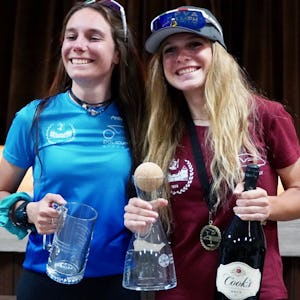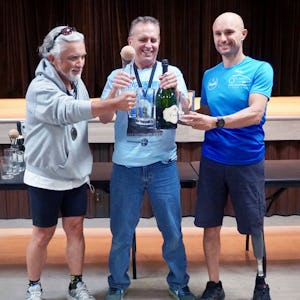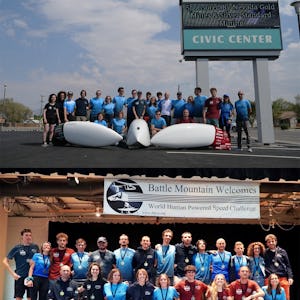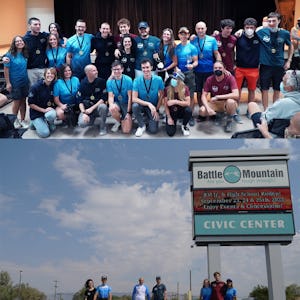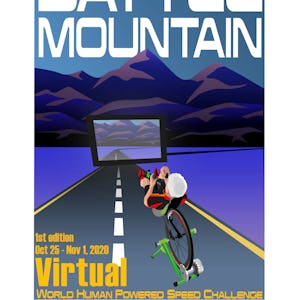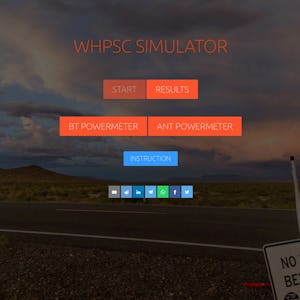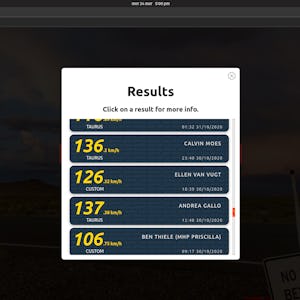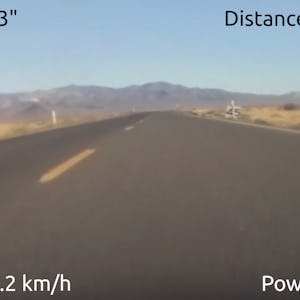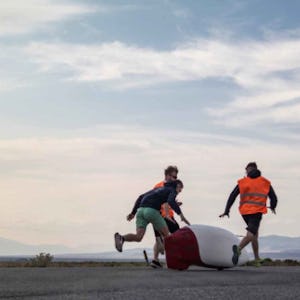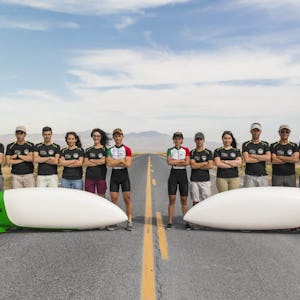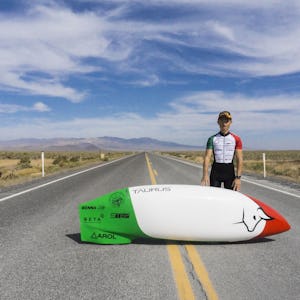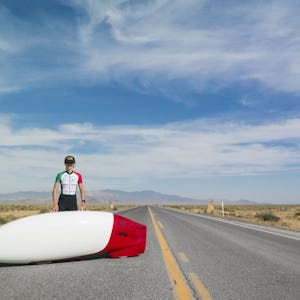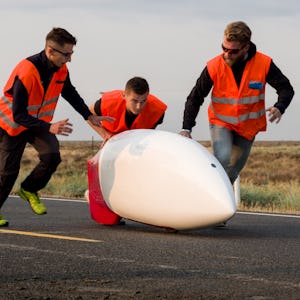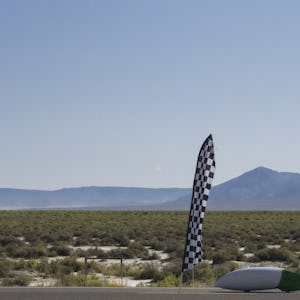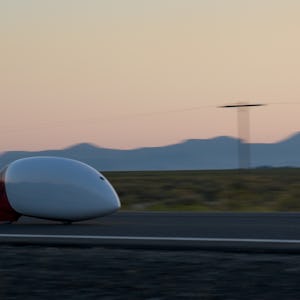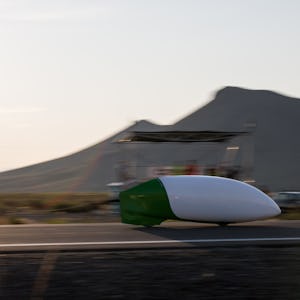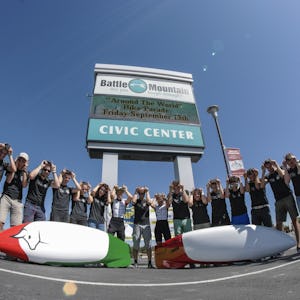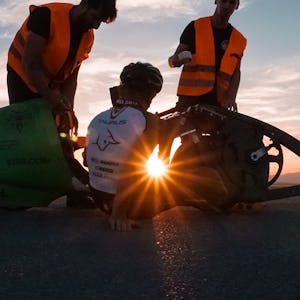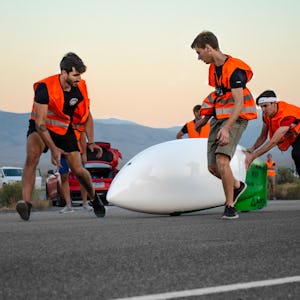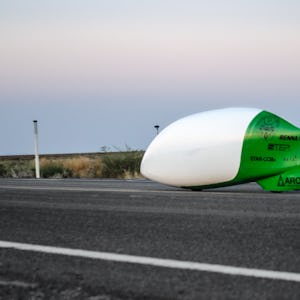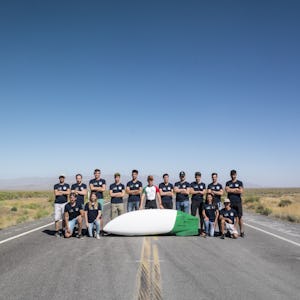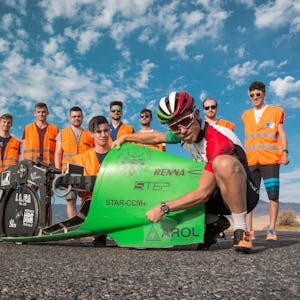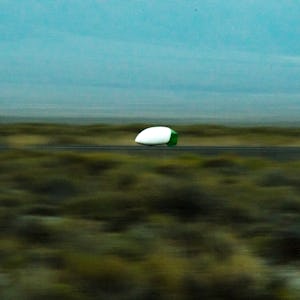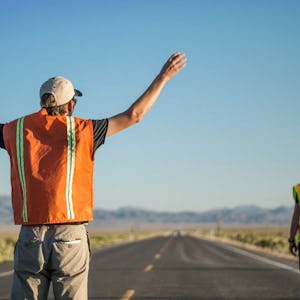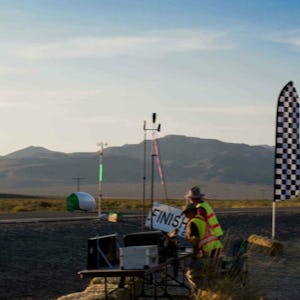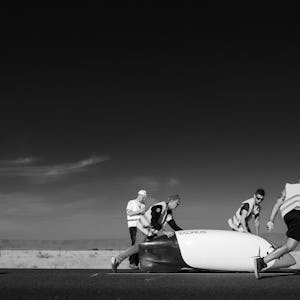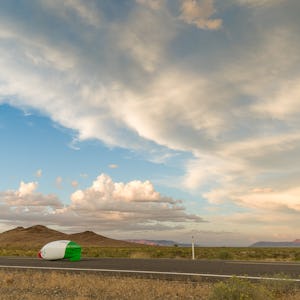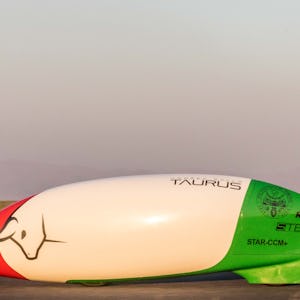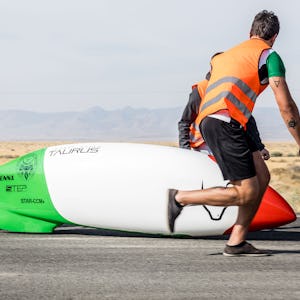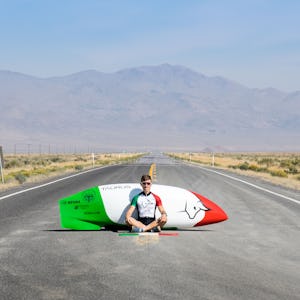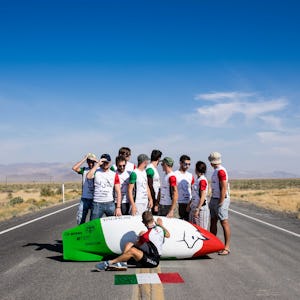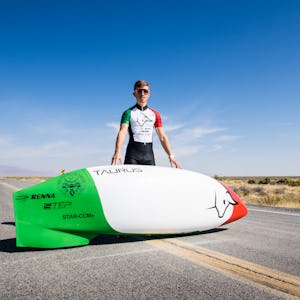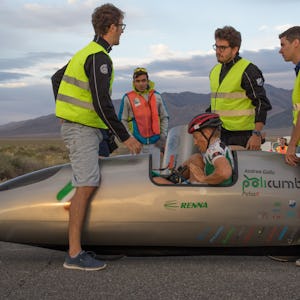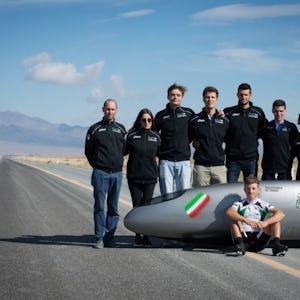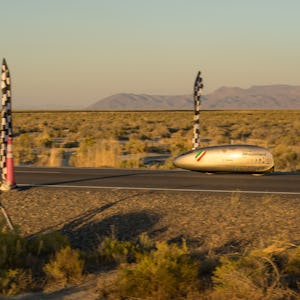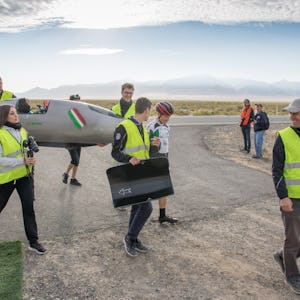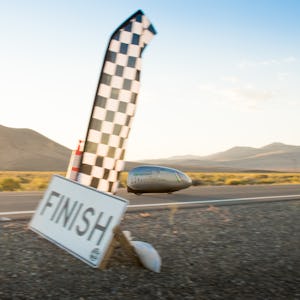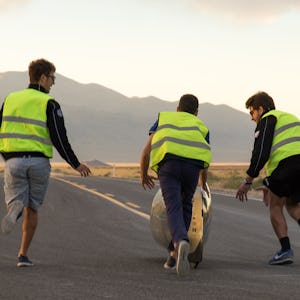WHPSC
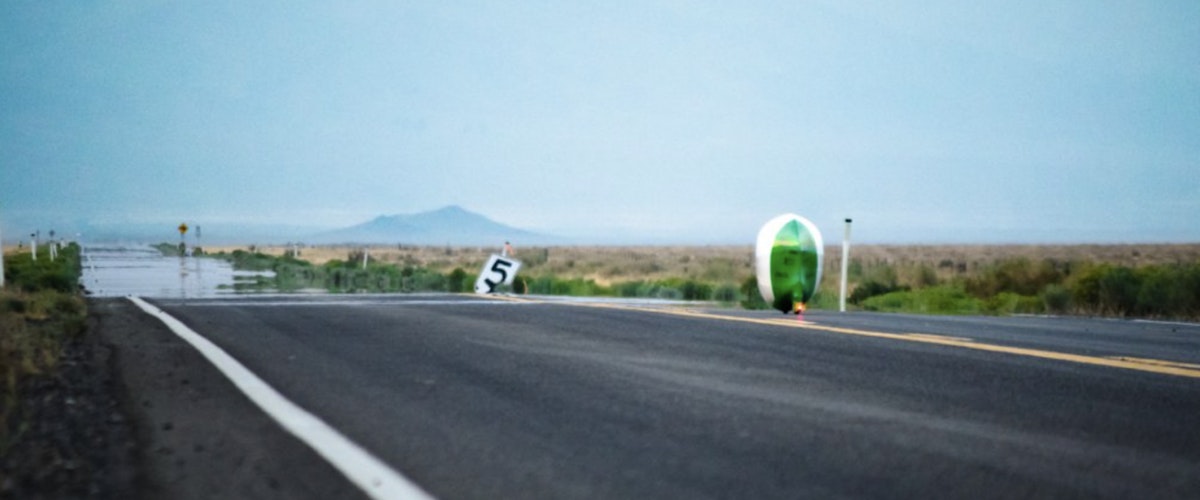
Every year we participate in the WHPSC (World Human Powered Speed Challenge), a competition carried out in Battle Mountain, Nevada (U.S.A), since 2000. The event hosts student and private teams coming from all over the world that challenge themselves to reach record velocities thanks only to human power: no battery, solar cell or motor support is allowed.
This race against all limits is made possible especially by the characteristics of the little American town: Battle Mountain shows one of the straightest and smoothest roads of the planet. At 1408 above s.l., a 5 miles paved road allows the riders to accelerate as much as possible before the 200meters-long trap in which their velocity is recorded.
Through the years, the prototypes dramatically evolved and in 2016 Todd Reichart, on the prototype Eta, reached the incredible velocity of 144.17 km/h (89.59 MPH), breaking any record and maintaining it until today.
If you want to try the experience of the WHPSC, you can try the online simulator that we developed by clicking here.

The race
The run is divided into four main phases:
Start
The prototypes are brought to the start, where every team helps his riders to take off. The prototype can be pushed from a single person for not more than 15 meters and this is a key phase to avoid a rollover.
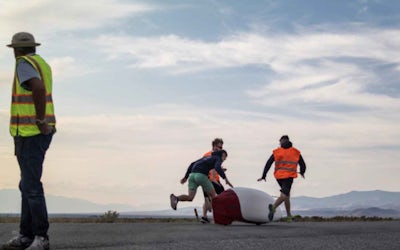
Run
The riders start their 5 miles-long run. The power outline to follow gets calculated through some performance analysis algorithms and this run requires a very hard physical performance: the rider has to bike in a very narrow space and with not much circulating air, often seeing on the outside only thanks to a screen linked to a camera vision system, or through small plexiglass in the fairing.
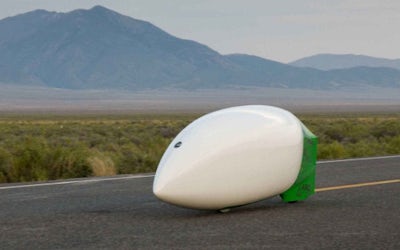
Timing
Once covered the 5 miles pursuit, the riders pass through the velocity trap, a 200 meters-long section of road that contains some laser detectors that sense the vehicles transition, calculating their average speed. The result will be taken into account only under certain wind conditions.
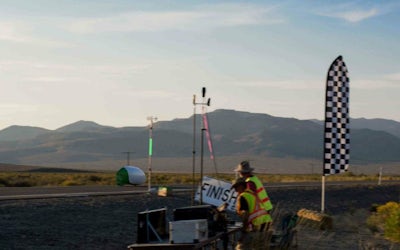
Catching
After having properly braked, the riders get helped to completely stop and exit the prototype. The run is over.
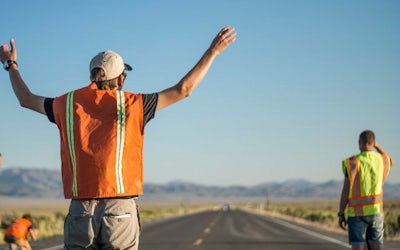
Our results
We have been participating since 2015, these are our results:
Speed and innovation are the key to the success we celebrated in our eighth participation.
We were awarded in the “Men, Arms only, Single rider” category with Cerberus, which reached a top speed of 83.28 km/h, thus winning first place for its powerful, safe and reliable performance on the road.
Gallery
As a Team we are very satisfied with the results obtained in 2023 edition: regardless of the records, the speeds achieved and the awards received, indeed, we are happy with on how we worked, teaming up and helping each other throughout the year.
The 2023 edition of the World Human-Powered Speed Challenge allowed us to deepen our knowledge with team Altaïr, from Annecy Institute of Technonology (France), already met last year, but also to get to know team Monash Human Power, from Monash University (Melbourne, Australia), having the opportunity to enrich our practical and technical knowledge and bring home new international friendships.
From an engineering point of view, we were awarded the best registered university team, ahead of the French and the Australians.
-
75.44 mph for Matilde driving Phoenix, who took home the 75 mph cap and ranked as the fourth fastest woman in the world.
-
51.45 mph for Diego driving Cerberus, who obtained the recognition of Cyclist of the Week for his great desire to race and for the increase in speed with each run completed and the 50 mph cap: he is the second fastest man in the world, with a gap of only 0.14 mph on the handtrike record.
-
69.7 mph for Enzo driving the Phoenix: it was his first experience with recumbent and faired bikes, which he learned to ride only two months earlier, but he still has a great desire to improve even just his record personal (and, why not, also the Italian one) by participating in next year's edition.
Gallery
This year we attempted the feat by bringing three vehicles overseas:
- TaurusX, led by Matilde Vitillo and Martina Stirano, for the female category record;
- Phoenix, led by the historic Team cyclist Andrea Gallo, for the men's category record;
- Cerberus, led by Diego Colombari, Italian Paralympic champion in Tokyo 2020, for the handtrike category record.
Thanks to the week's performances, and despite the rain, we won the first place of the university awards, followed immediately by the Altaïr team from Annecy Institute of Technology (France) and the Canadian team from University of Toronto. In fourth place was the English team from London South Bank University.
The 2022 WHPSC represented an important opportunity to return to racing in Nevada after the Covid-19 pandemic, and was a moment of growth and comparison between the various teams.
The maximum speeds reached by the team's riders, communicated during the awards ceremony, were the following:
- Martina Stirano: 110.15 km/h;
- Matilde Vitillo: 119.20 km/h;
- Andrea Gallo: 129.2 km/h;
- Diego Colombari: 66.97 km/h.
Gallery
2020 is a tough year for everybody: the pandemic that shakes up the world makes it impossible to hold the WHPSC. The team, though, never stops working and keeps himself busy with the construction of a completely new prototype, even if with some delay. The spirit of Battle Mountain as well never leaves us and makes us think that there is still a way to make the WHPSC happen: in a perfect 2020 theme, “virtually”. We developed a simulator that allows people to insert coefficients and data in the system and brings the rider through a complete run taking the power input from a trainer. Through the data set, it’s possible to see the velocity that would be reached with a prototype like Taurus. We make our simulator available to all of the other teams and communities around the usual challenge. The event, held in a non competitive way, is a success and allows us to keep it up and reunite the fonds of the WHPSC.
You can find the simulator here, and you can watch a short trailer we made on Youtube.
Gallery
It is in our 10th year of activity that we decide to bring two prototypes to the WHPSC: TAURUS and TAURUSX. At their lead, we can find respectively Andrea Gallo, already famous in the reclined bikes world, and Vittoria Spada, a 23 years old girl from Pino Torinese coming from the Cross Country discipline.
Andrea and TAURUS earn the second place on the world podium of the male category, reaching 136.49 km/h and becoming the third fastest biker on the planet. His result is only 0.29 km/h far away from the second top velocity ever reached in history.
Vittoria and TAURUS X make instead the second world position in the female category, crossing the finish line at 123.88 km/h, at only 2.64 km/h from the record keeper, Ilona Peltier.
Both the athletes set the italian record in their categories and collect the outcomes of years of design, study and research in the most different engineering fields.
- Maximum male velocity: 136.49 km/h
- Maximum female velocity: 123.88 km/h
Gallery
The 2018 edition sees us coming back to Nevada with TAURUS. The important studies made through the year on the tyres performance at high speed and the lightning of the whole components that made us drop the original weight by 30% result in an exceptional performance: Andrea Gallo gets to be apart of the 4 fastest men on the planet with a velocity of 133.25 km/h.
A new italian record is set and we get closer and closer to the result of Todd Reichart. We therefore decide to work for the next year with the target to bring home a really feasible european record and, maybe, even the world one. Furthermore, we start looking for a female rider to run in the female category.
- Maximum male speed: 133.25 km / h
Gallery
In 2017 we show up at Battle Mountain with a completely new prototype, TAURUS, whose name is inspired by our hometown, receiving appreciations from the senior competitors for our innovative solutions: a composite fairing with a very low drag and a new transmission with a moving sprocket set patented by some of our team members. It is in this way that Andrea Gallo, shielded by a fairing with the italian flag colors, makes it through the first phases of qualification crossing the finish line at 105 km/h. Despite the bad weather of the week, Gallo progressively augments his velocity until a final one of 122.32 km/h. The determination to break the world record remains our main target, but we acknowledge the necessity to ulteriorly improve and test our newly created prototype.
- Maximum male speed: 122.32 km / h
Gallery
We participate for the second year in a row to the competition in Nevada with the prototype PulsaR, the second completely faired vehicle of the team.
In the qualification session (with a shorter pursuit of 2.5 miles), the rider and student Andrea Gallo (class of 1987) earns right away the access to the second and longer run, easily getting over 102 km/h. In the next runs, we have to deal with the bad weather and some technical issues on the prototype, but, when Andrea can finally compete, he improves his result, setting the italian record at 109.96 km/h. It is however in the last run that he and PulsaR push themselves to 116.16 km/h, getting to be apart of the 24 fastest riders of history.
We get home from the american experience very motivated and with a richer skills background. We start right away to work on ameliorations to allow us to reach in the next years the world record.
- Maximum male speed: 116.16 km / h








